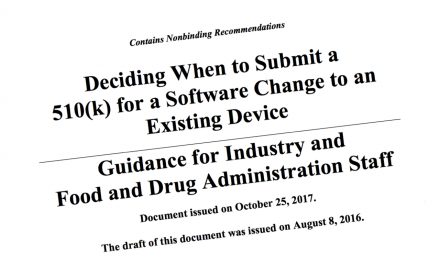According to the New York Times (registration required), the medical device market is set to take off:
and profitable segments of the economy. And as wave after wave of baby
boomers enter their prime health care spending years, the medical
device market is expected to grow by double digits for years to come.
The rationale for this prognostication (beyond the obvious demographics)? The price that Boston Scientific bid for a limping Guidant - $27 billion. You can see a time line of the deal here.
The industry ranges from inexpensive equipment like disposable syringes, crutches and home pregnancy
test kits to $1.3 million robotic surgery machines used to remove
cancerous prostate glands and equally expensive M.R.I. diagnostic
machines that can cost additional hundreds of thousands of dollars to
install.
But right now the financial spotlight is on
cardiovascular devices like Guidant's, which treat breakdowns in the
heart and circulatory system associated with aging and progressive
diseases like diabetes.
Drug-coated stents like Taxus from Boston Scientific are estimated to
have profit margins approaching 90 percent. Heart-regulating devices
like those made by Guidant, Medtronic and St. Jude Medical can cost
$25,000 or more and carry gross margins as high as 70 percent.
The
market enthusiasm for medical devices is a bright contrast to the
currently cloudy outlook for many traditional drug companies and
biotechnology start-ups, which have hit snags in developing major new
products.
"Devices are an area where technology rapidly fuses
with medicine," said Amit Hazan, an analyst at Suntrust Robinson
Humphrey in New York who focuses primarily on device companies with
market values below $1 billion. With big companies like Boston
Scientific and Johnson & Johnson looking to grow by acquiring new
product lines and few major medical device players like Guidant for
sale, Wall Street has come to regard many of the smaller fry as prime
takeover candidates.
The story goes on to make some financial performance comparisons between the medical device market and pharma, and suggest that we may see a return to the late 1980s when big pharma bought a number of medical device vendors (only to divest in the 1990s). Bright spots for medical devices include an easier time in going to market (especially FDA approvals) and the close vendor/customer relationships that are a part of many medical device development projects.
One caveat is mentioned:
that link them to computers and communications networks, allowing data
from patients with implants to be monitored remotely. Guidant's
innovations in such patient monitoring and networking, marketed under
the Latitude brand name, are among the enhancements it is counting on
to help rebuild market share.
The connectivity component, especially for remote monitoring products targeting aging baby boomers, will be a critical success factor for many new products.
And speaking of remote monitoring, BusinessWeek as a new story on new remote monitoring solutions coming to market.
Hat tip: FierceHealthcare]




Recent Comments